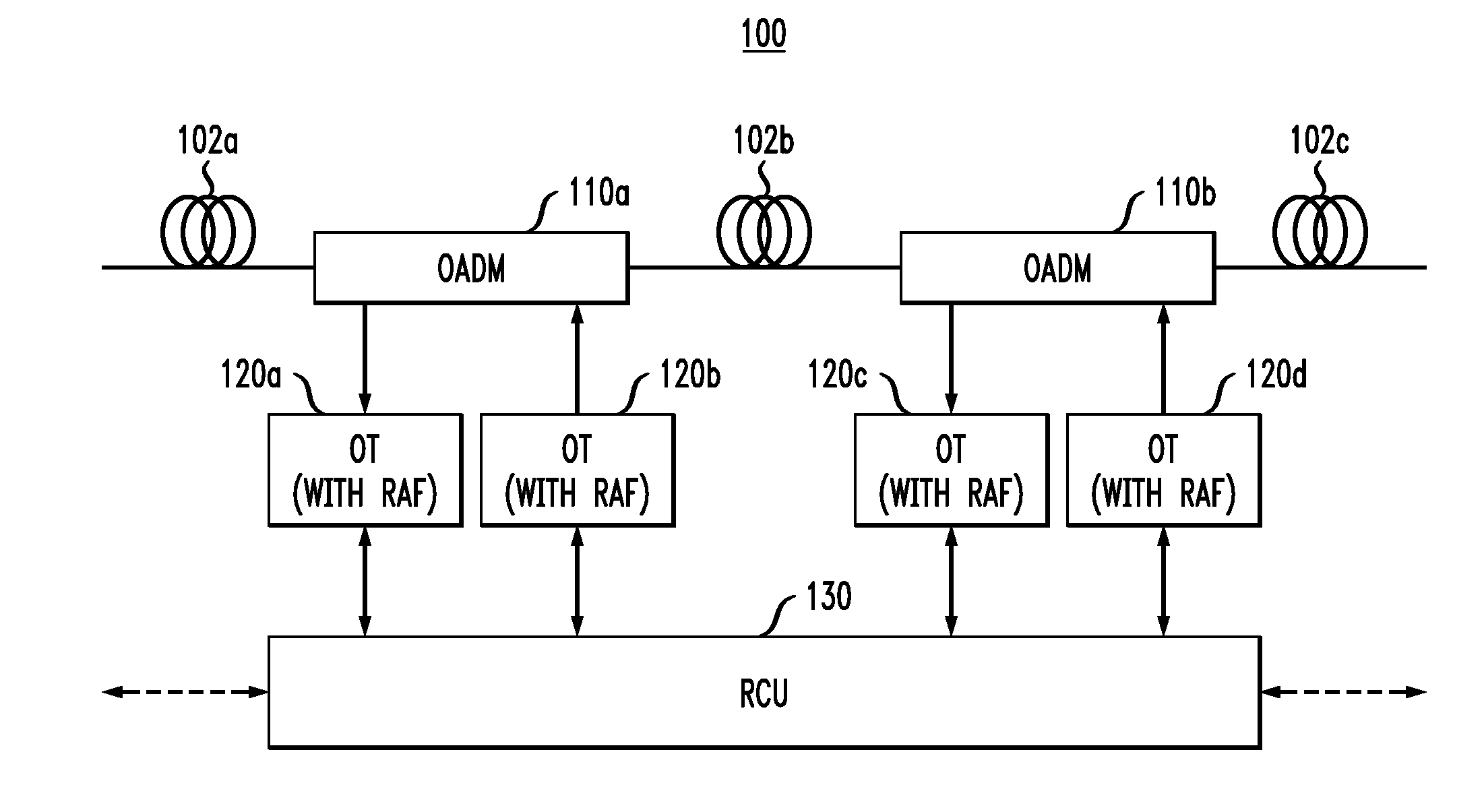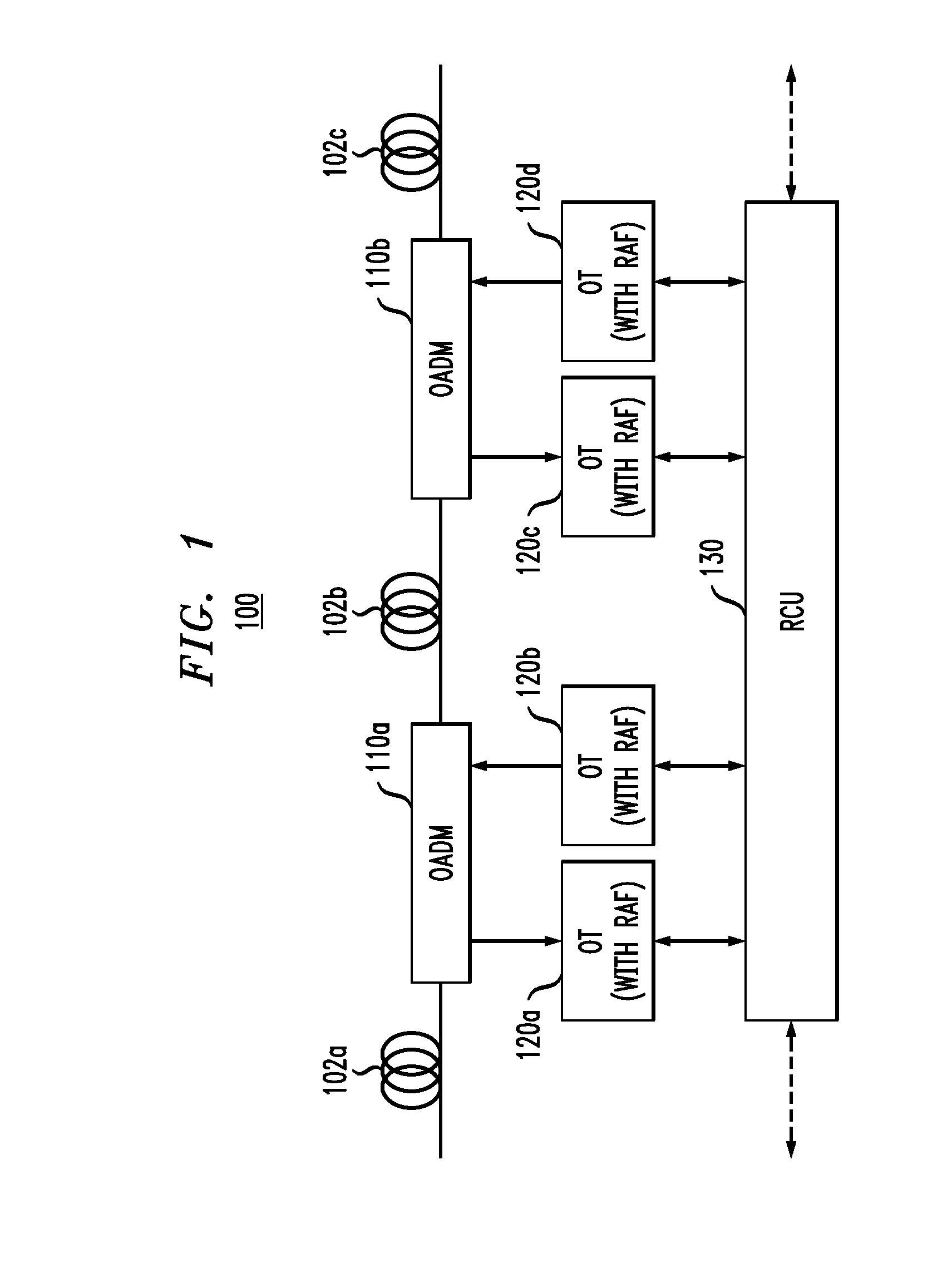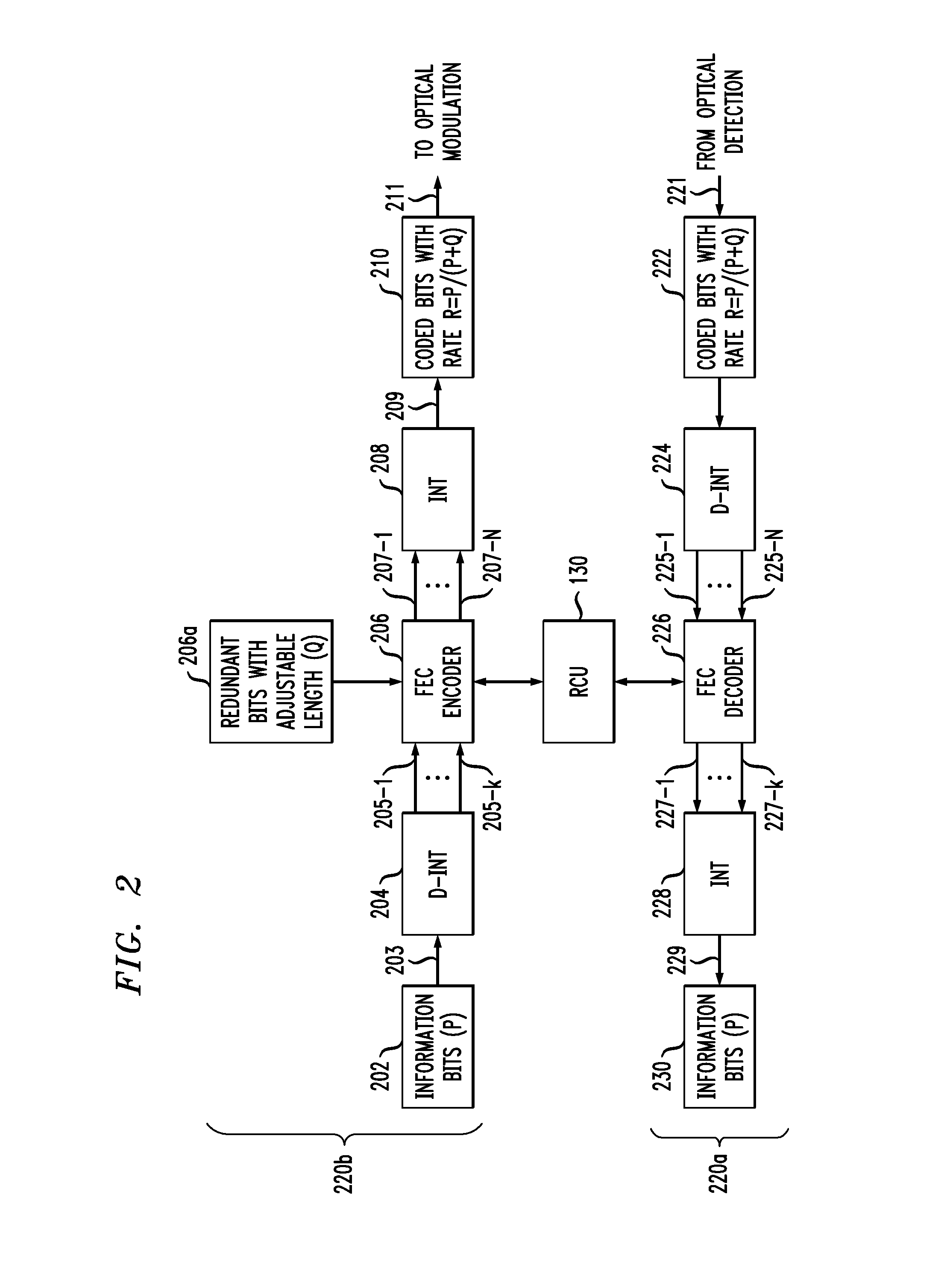Rate-adaptive forward error correction for optical transport systems
a forward error correction and optical transport technology, applied in the field of optical transport systems, can solve the problems of adversely affecting the overall throughput of the ots, inability or high cost to change the optical signal rate, etc., and achieve the effect of reducing the extent of system-resource underutilization in the ots of the invention, improving the overall capacity of the ots, and adequate, but not excessive overall system margin
- Summary
- Abstract
- Description
- Claims
- Application Information
AI Technical Summary
Benefits of technology
Problems solved by technology
Method used
Image
Examples
Embodiment Construction
[0015]In general, the noise associated with a communication channel can cause errors at the receiver. Forward error correction (FEC) techniques, such as those employing RS (Reed-Solomon) and BCH (Bose-Chaudhuri-Hocquenghem) codes, improve reliability of the optical channel by adding redundancy to the data, which is used at the receiver to detect and correct errors. Usually, more redundancy enables more reliable communications, but at the cost of consuming additional bandwidth or lowering the throughput.
[0016]An FEC code is characterized by an FEC-code rate, Rc, defined as a ratio of the number of original information bits k to the total number of transmitted bits n, the latter number including both the information bits and redundant bits, i.e., RC=k / n. An FEC-code rate can also be characterized in terms of an FEC-overhead rate, RO, defined as the ratio of the number of redundant bits to the number of original information bits in an FEC frame, i.e., RO=(n−k) / k. The relationship betwe...
PUM
 Login to View More
Login to View More Abstract
Description
Claims
Application Information
 Login to View More
Login to View More - Generate Ideas
- Intellectual Property
- Life Sciences
- Materials
- Tech Scout
- Unparalleled Data Quality
- Higher Quality Content
- 60% Fewer Hallucinations
Browse by: Latest US Patents, China's latest patents, Technical Efficacy Thesaurus, Application Domain, Technology Topic, Popular Technical Reports.
© 2025 PatSnap. All rights reserved.Legal|Privacy policy|Modern Slavery Act Transparency Statement|Sitemap|About US| Contact US: help@patsnap.com



